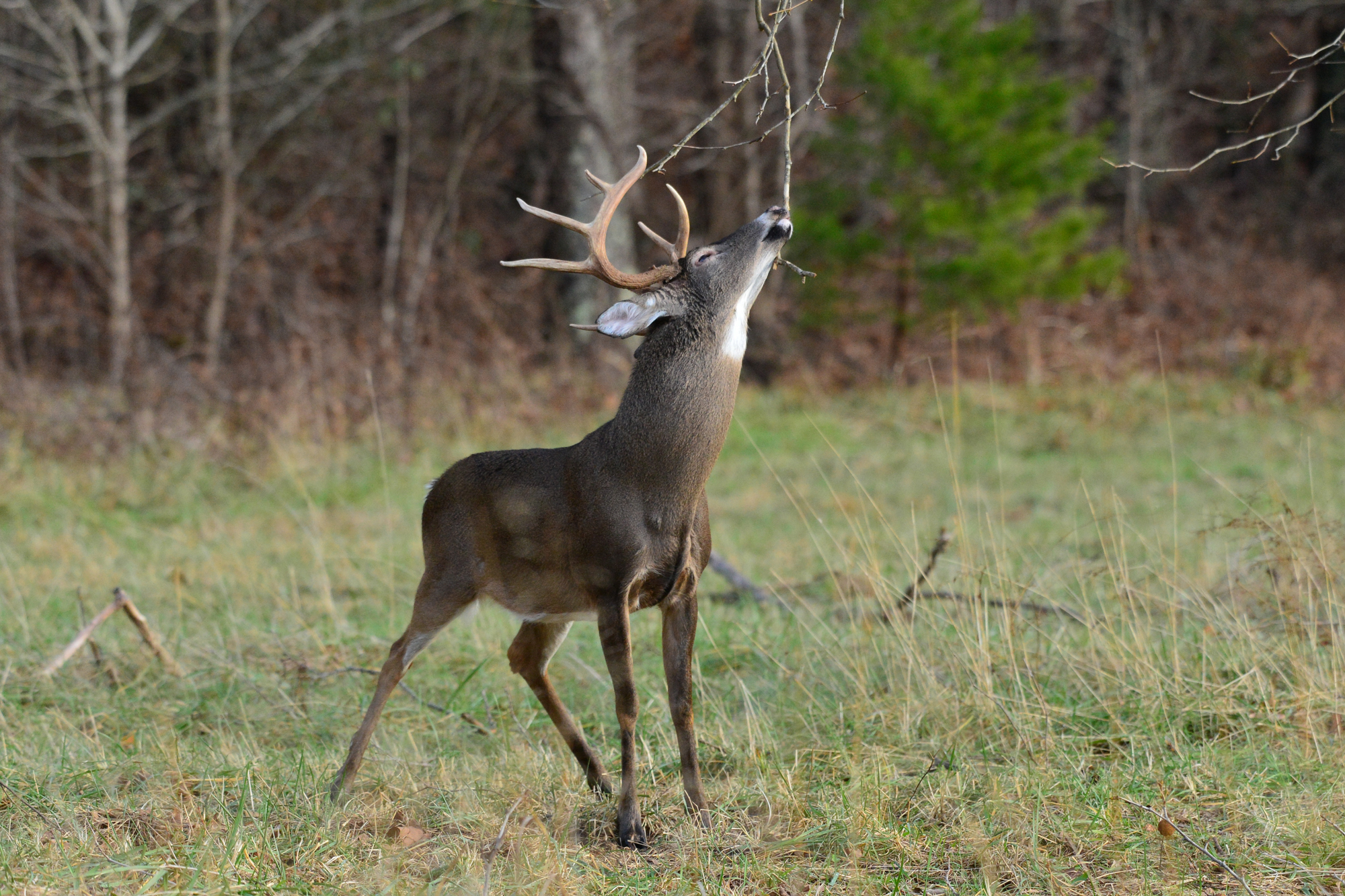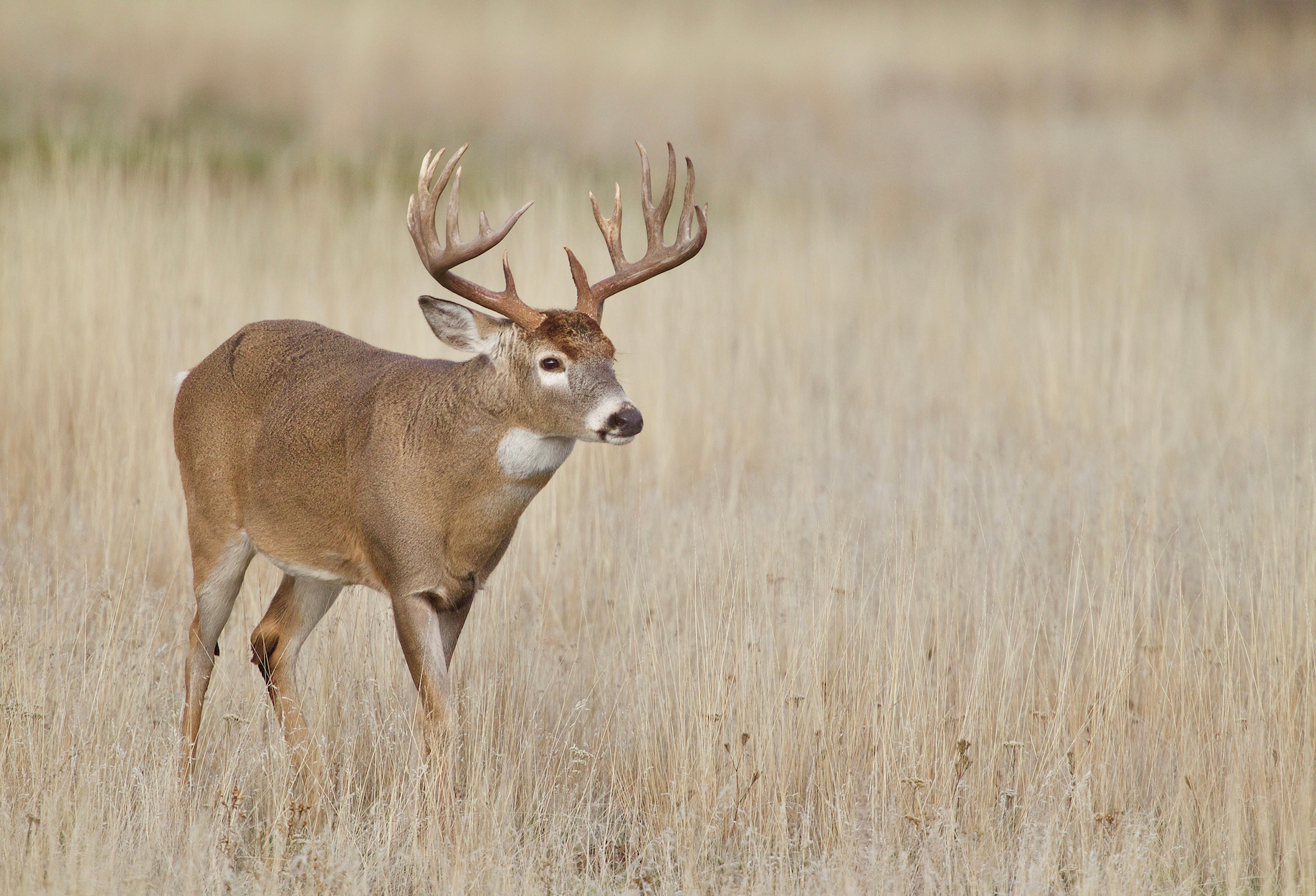On Friday Oklahoma Gov. Kevin Stitt signed a bill into law that could effectively turn the state into a giant laboratory for chronic wasting disease. Known as the Chronic Wasting Disease Genetic Improvement Act, the legislation includes provisions that concern conservation groups and wild deer advocates — many of whom called on Stitt to veto the bill after it passed both chambers of the state legislature last month.
Hunting and conservation groups say the CWD Genetic Improvement Act poses a risk to Oklahoma’s wild deer herds because it’s based on emerging science that has, so far, only been studied in captive deer populations. It’s not so much the research itself but the way the state wants to implement this research that worries them: private landowners will be allowed to buy whitetails bred in captivity as soon as 2026, and release them onto their own low-fence ranches and farms. The law’s supporters, meanwhile, see it as a promising step toward changing the way we manage CWD in the wild.
Some of the law’s biggest proponents are deer breeders, whose operations support the state’s multi-billion-dollar hunting industry by providing trophy bucks for game ranches. Oklahoma is home to more than 200 captive deer breeding operations, according to the state’s most recent estimates in 2013. At least one of these operations is owned by a state representative who voted to approve the new CWD Genetic Improvement Act.
“Some people are saying this is really innovative and progressive, and that Oklahoma can lead this way,” says National Deer Association director of policy and Oklahoma deer hunter Catherine Appling-Pooler. “But the flip side is that, well, this sets Oklahoma up to be an experimental area. It makes our native herd a guinea pig for this science.”
What’s In Oklahoma’s New CWD Law?
At its core, the CWD Genetic Improvement Act establishes a pilot program that aims “to enhance the genetic durability of Oklahoma deer against chronic wasting disease.”
This idea of “genetic durability” against CWD is based on a burgeoning field of research that involves selectively breeding whitetails that are less susceptible to CWD. Some of this work is already underway in Texas, where a prominent genetic researcher at Texas A&M has been overseeing a novel strategy that uses genetic predictions to determine a deer’s susceptibility to CWD. In a peer-reviewed study published in 2020, Dr. Chris Seabury concluded that this susceptibility is both heritable and predictable.
“I showed that I could predict with greater than 80 percent accuracy which animals would become CWD positive at known positive facilities based on their genetic profiles,” Seabury told Outdoor Life last year. “We know what deer are most susceptible, and that’s really the key.”
Read Next: Four Things Hunters Should Know About Chronic Wasting Disease
Seabury was able to begin testing his theories in a controlled setting in 2021, when a Texas deer breeder had a buck test positive for CWD and faced a state order to depopulate his entire herd. Instead, with the approval of the Texas Parks and Wildlife Department, Seabury and the breeder euthanized all the deer that had come in contact with that CWD-positive buck and they ran genetic tests on every remaining animal to determine its “genomically estimated breeding value.” Using those values as a guideline, they kept what Seabury calls the “more durable” deer and culled the rest. This put the deer breeder in a unique position to create a new line of hardier whitetails, and there hasn’t been a CWD-positive deer at the operation since 2021.
“Our research continues to show that less than one percent of the farmed white-tailed deer with ‘resistance genetics’ (as defined by our program) ultimately test positive for CWD at CWD-positive operations nationwide,” Seabury writes in an email to OL. “Moreover, the genetics which afford this ‘resistance’ to CWD are also common among farmed white-tailed deer; thereby only further supporting our approach.”
It’s clear Oklahoma legislators have been paying attention to these developments. The state’s new law explicitly directs the Oklahoma Department of Wildlife Conservation to collect DNA samples from wild deer across the state in order to establish a baseline of “genomic breeding values,” which echoes Seabury’s work at the Texas deer breeder’s facility. (Seabury did not comment when asked if he was involved with the creation of the CWD Genetic Improvement Act.) The pilot program will be run in partnership between the ODWC, which manages the state’s wild deer as well as commercial high-fence hunting operations that use deer bred in captivity, and the Oklahoma Department of Agriculture, Food and Forestry, which oversees deer breeders in the state.
How the state’s wildlife biologists plan to establish a genetic baseline amongst an estimated population of 750,000 wild deer remains to be seen. Although Oklahoma didn’t confirm its first case of a CWD-positive free-range whitetail until just last year, ODWC has been testing for the disease since the late 90s. Over that time, the agency says it has tested roughly 10,000 deer, which is less than 1.5 percent of the state’s wild population.
Nevertheless, the law directs the ODWC and ODAFF to use these genetic markers to guide what’s effectively a resistance breeding program made up of native deer born in captivity in Oklahoma. It’s unclear where this breeding program would be established, and it’s possible that commercial deer breeders would play a key role.
But here’s where the rubber meets the road: According to the new law, these “bred female and male deer may be released” beginning in 2026, with releases taking place between Feb. 1 and April 15. The law encourages this by allowing private landowners to purchase bred deer that meet the established genetic criteria and then release those deer onto their own property.
These landowners don’t have to be registered deer breeders, and the law only requires them to purchase a one-time permit from ODWC that will cost, at most, $500. Their properties don’t have to be high-fenced, either, which means that many of the bred deer released as part of Oklahoma’s new pilot program will interact with wild deer that have not been selectively bred or genetically screened.
The Risk of Releasing Captive Deer into the Wild
This inclusion of a stocking program is what alarms skeptical conservationists more than anything. They say it’s too risky to try and manage wild deer herds with unproven scientific theories.
As a former legislative liaison with the ODWC, Appling-Pooler has been involved with discussions around the CWD Genetic Improvement Act since its inception in early 2024 — when it was introduced to ODWC as a bill about feral swine management. She says it wasn’t until the day before the bill’s first reading in the House agriculture committee that she learned it had morphed into legislation related to CWD. She and others with the state agency worked with the bill’s authors to amend some of that language, which she says was “even more vague back then.”
Those amendments have not been enough to ease the concerns that NDA and other groups have voiced. Appling-Pooler says these groups are most alarmed by how this program is being rushed into existence.
“NDA’s concerns are specifically related to the stocking program,” Appling-Pooler tells Outdoor Life. “From the conversations I’ve had with legislators, their intent is to say the [ODWC] will follow whatever science is concluded. But by including a stocking program, or even mentioning one before the research is done, that implies that a conclusion has already been drawn.”

This is far from the case, she says. Because while the genetic research being done in Texas (and potentially elsewhere) could help improve our overall understanding of CWD, the NDA points out that this science has not been widely accepted. Nor has it been validated in wild deer populations.
Another known CWD researcher who spoke on the condition of anonymity says there is real value in the selective breeding work being done in captive facilities. He also believes that wild cervid populations will eventually adapt to the disease without human intervention.
“There are two known prion gene variations in deer that certainly do extend their survival times with CWD,” the researcher says. “Unfortunately, they still die, but often not until 4 to 5 years after infection (compared to two years for a normal CWD incubation period). Models suggest it will take 50 to 100 years of CWD for wild populations to really shift genetically to the more long-lived infected deer.”
Read Next: Here’s What Top Chronic Wasting Disease Researchers Can’t Say on the Record
Appling-Pooler says one of her biggest questions is why legislators would want to enact such a law in the first place. She explains that ODWC and ODAFF are already working together to update the state’s Joint Response Plan for CWD, and that ODWC already has the constitutional authority to manage the state’s deer, which extends to research.
In other words, if the state’s wildlife experts wanted to establish a research program to better understand the genetic durability of deer to CWD, they could do that without having to pass a new law or green light a stocking program — one that could create a new market for Oklahoma’s deer breeders. Kevin Wallace, an Oklahoma representative who voted in favor of the new CWD Genetic Improvement Act, is “a former co-owner of The Wilderness Refuge, a hunting reserve … and current owner of Wallahachie L.L.C., a whitetail deer and cattle breeding operation,” according to his website.
“We just don’t know how this will impact our native herd,” Appling-Pooler says. “NDA is not opposed to research or science, and we’re not opposed to genetic research. We want to follow the science responsibly and at the pace good science allows us. But we are opposed to going from step one to step 100 all in one bill.”
NDA and other concerned parties will continue to oppose the provisions included in the new law, and the governor’s approval doesn’t mean that every one of those provisions will be enacted.
“This bill has passed, and although we’re disappointed with the outcome, it’s not unexpected,” Appling-Pooler says. “However, there’s also going to be some administrative rules and processes that we’ll be tracking as well … so there will be opportunities for hunters to voice their opinions at a later date. This isn’t over.”
Read the full article here




